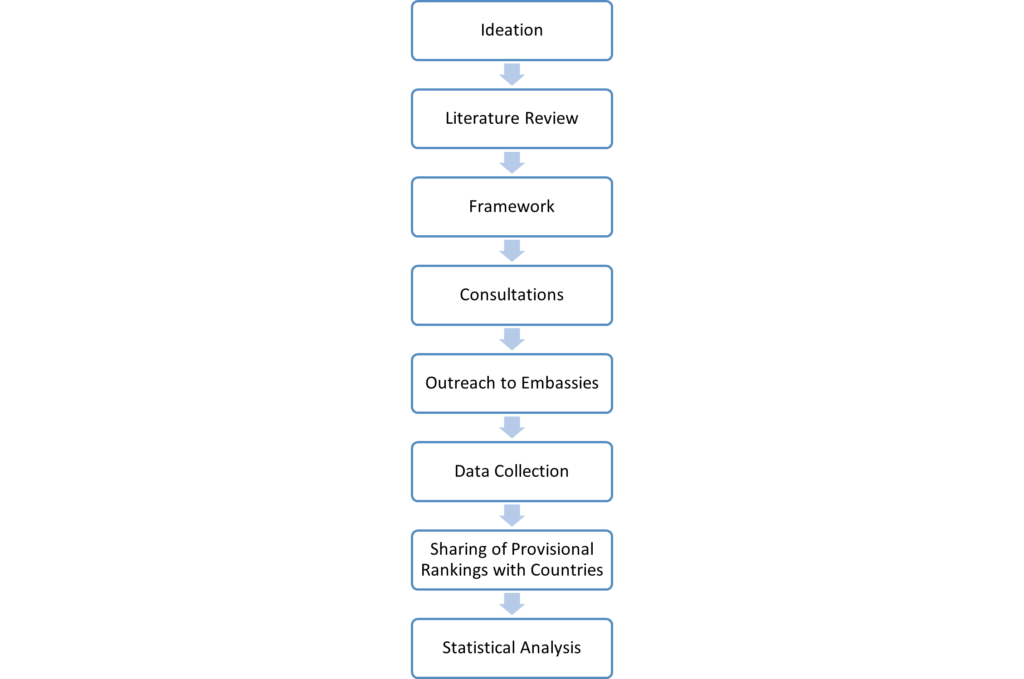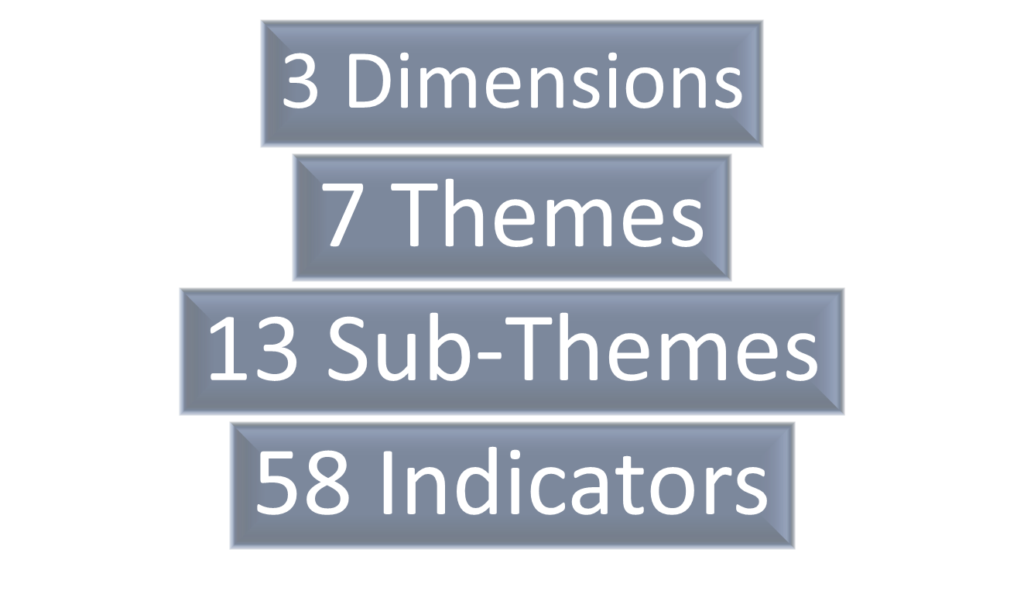Responsible Nations’ Index (RNI) 2021, is the world’s first comprehensive index ideated and curated by Dr. Rajendra Pratap Gupta. The Index moves the needle from ‘powerful nations’ to ‘responsible nations.’ We believe that ‘Responsibility’ will be the big idea going forward and that our priorities need to be re-aligned and the need for global inter-generational planning should be realized. Responsible Nations’ Index ranks nations on how responsible they are towards their citizens, the planet, and towards other countries.
Objective
Responsible Nations’ Index ranks the nations on responsible behavior to shift the focus on indicators that encourage peace, prosperity, and sustainability which, in our view, makes the nations responsible for their policies and actions, furthering our goals of liveability and sustainability.
Methodology
Responsible Nations’ Index is based on objective scoring and scientific methodology, for which discussions and deliberations were made with various global stakeholders. The methodology of the index has been transparent and was kept in the public domain from August to October 2021, to open wider public participation. Questionnaires were shared with the embassies and missions. However, for the countries that didn’t respond, government websites, United Nations recognized websites and indices, and assessment done internally have been used to collect information. Once the data for the 58 indicators was analyzed, country-wise rank along with the Responsible Nations’ Index questionnaire was again shared with the embassies, or the respective Governments of the nations, as an opportunity to share any updated/additional information that might need to be updated in the Responsible Nations’ Index.

The index has 3 dimensions, 7 themes, 13 sub-themes, and 58 indicators.

Dimensions
- Domestic
- Planetary
- International
Themes
- Quality of Life
- Equity
- Equality
- Governance
- Environment and Sustainability
- Intergenerational Planning
- International Relations
Sub-Themes
- Investment on Health
- Investment on Education and Skill Development
- Citizen-Centric Policies & Amenities
- Social Justice & Inclusiveness
- Women Empowerment
- Digital Freedom
- Religious Freedom
- Legal Freedom
- Economic Parameters
- Institutions, Systems, and Processes
- Land, Air, Water, and Energy
- Long-Term Plans
- Peaceful Co-Existence
Indicators
- Life Expectancy
- Infant Mortality Rate
- Maternal Mortality Rate
- Government policies/programs promoting physical health/ promotion of sports
- Government program and policies (Free screening/ care/ advice) for communicable/ non-communicable/ chronic diseases/ malnutrition and deficiency/ immunization drives for children/adults
- Government policies/programs promoting mental health and wellbeing
- Government Policies and programs for Digital Health
- UHC (Universal Health Coverage)/Free access to healthcare for vulnerable/poor population
- Literacy Rate – Oral, Written
- Government policies and programs promoting training and skill development
- Percentage of population using safely managed Drinking water services
- Food Availability (Food Security)
- National policies and programs focused on access to housing/shelter
- Access to Electricity
- Percentage of population using safely managed Sanitation Services
- Percentage of Budgets of Health, Education and Defence as a percentage of GDP
- Pension Schemes/Social security/Unemployment allowance for senior citizens
- Rights for LGBTQI+
- Schemes/Social security/Unemployment allowance for differently-abled
- Schemes/Social security/Unemployment allowance for tribals /natives/ indigenous people
- Policies and programs on child labor
- Gender Ratio (Sex ratio at birth)
- Equal pay at work/Right to equal pay/Non-discriminatory policies
- Percentage of women in Parliament
- Inheritance Rights
- Abortion Rights
- Government policies focused on sexual and reproductive health
- Gender Gap – Education
- National E- Government
- Ban on Social media/Restriction on social media usage
- Data sovereignty/Are there data protection laws in the country
- Cost of data and voice- broadband and telecom
- 4G Network
- Right to freedom of religion
- Rule of Law
- Free/Subsidized legal aid
- Policies for Refugees
- GDP per capita (GDP per capita growth)
- Gross debt position (% of GDP)
- Government policies and programs promoting entrepreneurship
- Economic empowerment/Universal Basic Income for the vulnerable sections
- Ease of doing business
- Innovation
- Democracy
- Constitution
- Regular Elections
- Free, Independent and Pluralistic Media
- Corruption
- Forest area (% of land area)
- Air Quality Index
- Renewable energy consumption
- CO2 emissions (metric tons per capita)
- Policies on water conservation
- Paris Climate Agreement
- Does the nation have a long-term plan?
- Faced / Not Faced UN sanctions
- FATF list
- Countries that have signed NPT, CWC and BTWC
